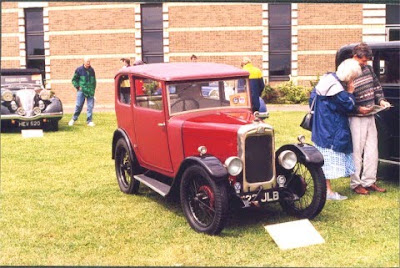The History Of The Triumph Classic Cars with Triumph Super 7 & Super Seven cars models (Triumph Cars Models)
The Triumph Super 7 was a car manufactured from 1927 to 1934 by the Triumph Motor Company. It was produced as a response to the success of the Austin 7 and was Triumph's first car to be made in large numbers. In 1933 the name was changed to the Triumph Super 8.
Design
Development of the new car had started in 1925 when Arthur Sykes, who had been with Lea-Francis was given responsibility to design a new small car. Amongst those he recruited to help him was Stanley Edge, who had been the original draughtsman for the Austin 7. The car was launched in September 1927 and was 6 inches (150 mm) longer and 2 inches (50 mm) wider than the Austin. The new 832 cc 4 cylinder side valve engine, mainly designed by Harry Ricardo, had a stroke of 83 mm (3.3 in) and bore of 56.5 mm (2.2 in) and unlike the Austin had a three bearing crankshaft with pressure lubrication and monobloc crankcase made from cast iron. (The Austin 7 had a two-bearing crankshaft and the cylinder block and crankase were separate castings.) The car followed its Triumph predecessors by having Lockheed hydraulic brakes, but now they were internal expanding in 9.5 in (241.3 mm) drums and so less affected by water then the older external contracting type. The handbrake operated on the transmission.
The chassis had a rigid front axle supported by half elliptic springs and a live rear axle with Austin 7-like quarter elliptics allowing the chassis side members to finish ahead of the rear axle. The three speed non-synchromesh gearbox was mounted in unit with the engine and transmitted power to the worm gear final drive via a torque tube. The electrical system was 6 volts.



No comments:
Post a Comment